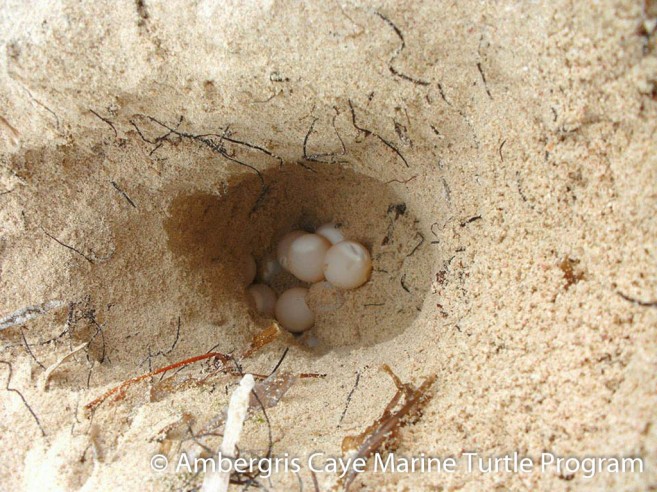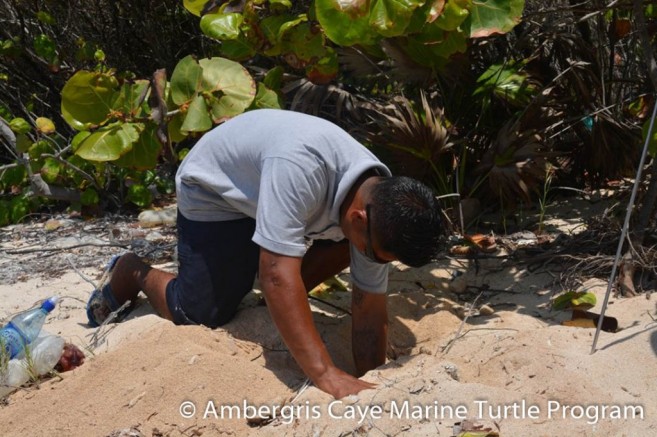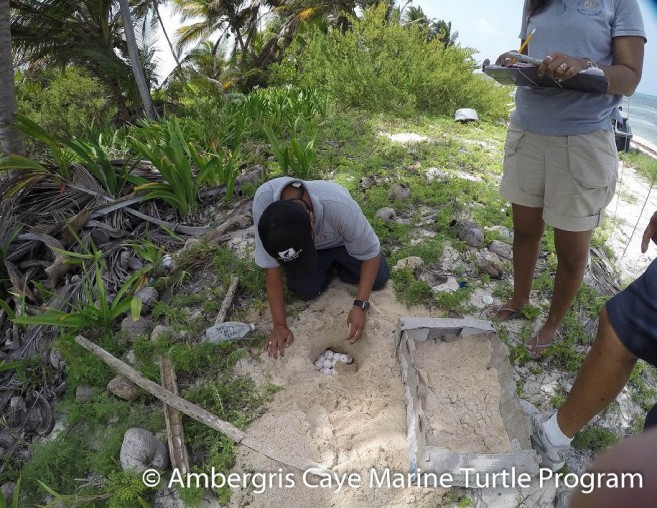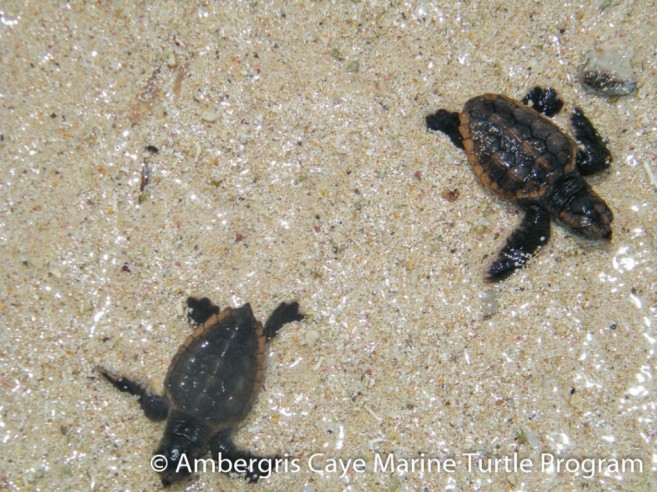The 2018 turtle nesting season is at its peak on Ambergris Caye, with nests hatching along the northern coastline. The number of nests has been increasing annually and some turtles have been nesting near areas with development. At such, nearby residents/visitors might stumble into a hatching nest and be tempted to help the baby turtles reach the sea. This action, well-intended as it may be, is discouraged by the Hol Chan Marine Reserve, who urges the public when discovering a nest with baby turtles to contact them at 226-2247 any day during normal working hours. They advise that for the well-being of the turtles and to keep accurate statistics for their marine turtle program, people need to avoid coming into contact with the nest or the hatchlings.
According to Hol Chan marine biologist Kirah Forman, in 2008 they started the Ambergris Caye Marine Turtle Program to monitor turtle nesting on the island. Foreman explains that after Gales Point Manatee on the mainland, Ambergris Caye is one of the key turtle nesting sites in Belize for Green, Loggerheads and Hawksbill turtles. Belize is a member of the InterAmerican Convention for the protection of sea turtles, which engage in the biodiversity and survival of this marine creatures. Hol Chan is the scientific representative in Belize for this committee and must provide reports on the status of sea turtles within Belize. “Sea turtles do nest all over Belize, but Gales Point and Ambergris Caye have the highest density, thus, reports are only from these areas,” said Forman. She stated that in 2017, a total of 115 nests were reported from Ambergris Caye, which was similar to the amount from Gales Point.
She noted that when people tamper with nests, it is impossible to keep an accurate record as to the success of the hatching and how many turtles made it out. “We want to leave the process of them getting out of the nest as natural as possible as these turtles will come back to nest at the same beach where they were born,” said Forman. “If someone finds a nest with little baby turtles, they should give us a call right away then just observe and not try to intervene”. There are times when Hol Chan needs to relocate nests or assist hatchlings to make it safely to the sea, but according to Forman, there is a process to do so. “We try not to do it, unless it is absolutely necessary, perhaps, if the nest is compromised and all babies could perish,” she said. “When we take them out, we allow them to crawl to the shore and still try to keep it as natural as possible.” Foreman also indicated that sea turtles have a high mortality rate and the reason they have been able to survive up to today is the fact that every nest has around 100 eggs. Even when all or most of those eggs hatch, only one or two of those baby turtles will manage to survive into adulthood and return to the beach to lay the eggs for the next generation.
Recently, illegal fishing practices in other parts of the region and the rapid development on the island have threatened the survival of dozens of nests recorded yearly. The illegal placement of fishing nets in Mexico, for example, recently lead to the death of more than 300 Olive Ridley turtles in Mexico. With the increase of nests spreading southward on Ambergris Caye there is a higher probability of human contact. Property owners and hoteliers in north Ambergris Caye are encouraged to be mindful and report any potential nest sites. Forman stated that turtle nesting can be a huge attraction for eco-tourism, which will speak well of islanders in helping these creatures to continue existing for many more years.
Rehabilitation centre at Hol Chan
The Ambergris Caye Marine Turtle Program also serves as a rehabilitation centre for distressed turtles. Two weeks ago, they received an ill Hawksbill turtle from Placencia, where it was drifting on the shore. The turtle is showing tremendous signs of improvement as it is being attended by Hol Chan staff. Forman hopes to soon be able to tag and release the animal after it makes full recovery. The Marine Program also encourages the public to report dead turtles so they can investigate what could be affecting the turtle species. At the same time, they welcome donations so they can continue treating sick turtles, rehabilitating and releasing them. According to Foreman, since 2008, they have successfully tagged and released around 25 turtles.
Donations can be made by calling Hol Chan at 226-2247.
Hol Chan asks residents to refrain from interfering with turtle nests and hatchlings

Share
Read more

